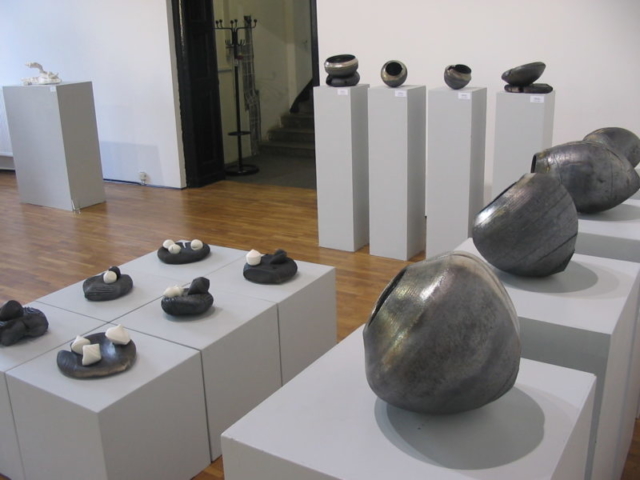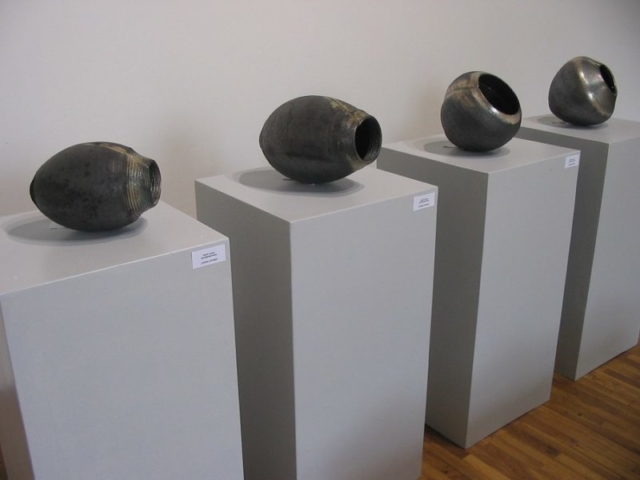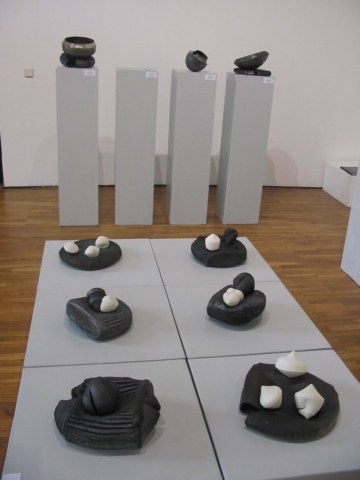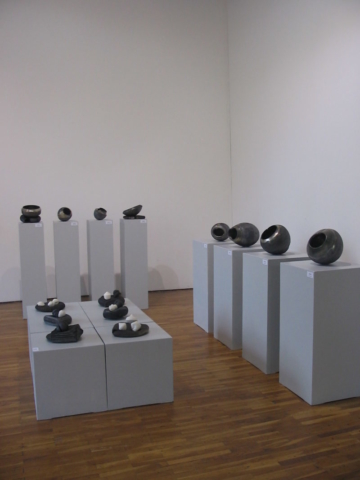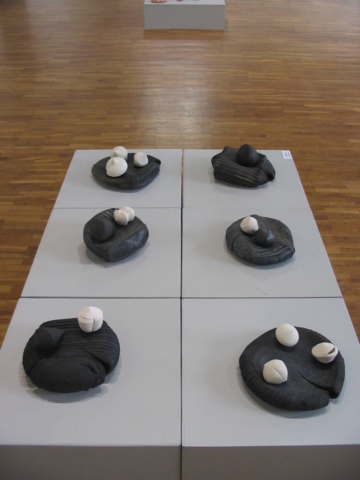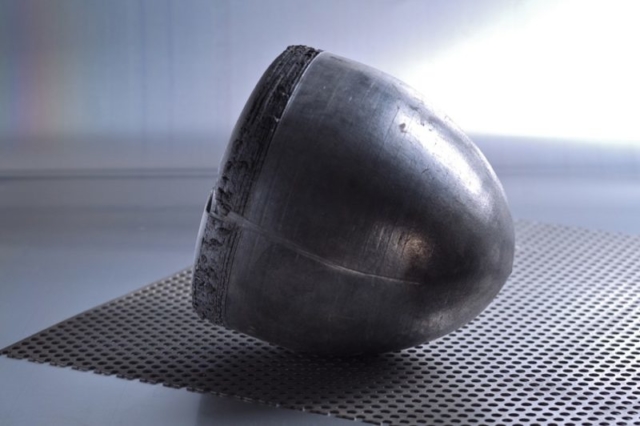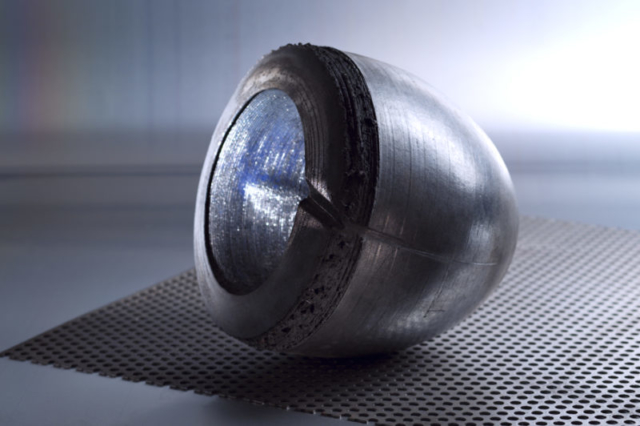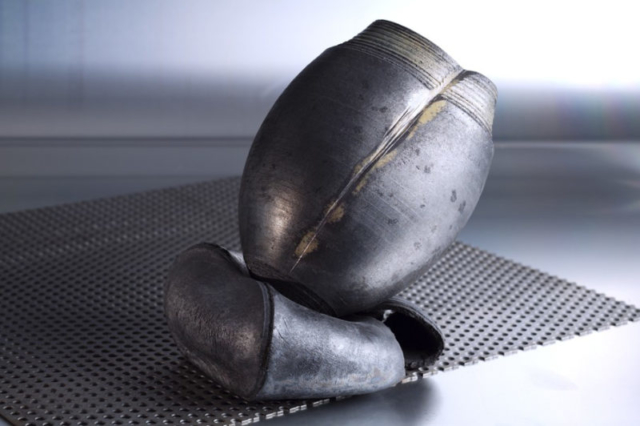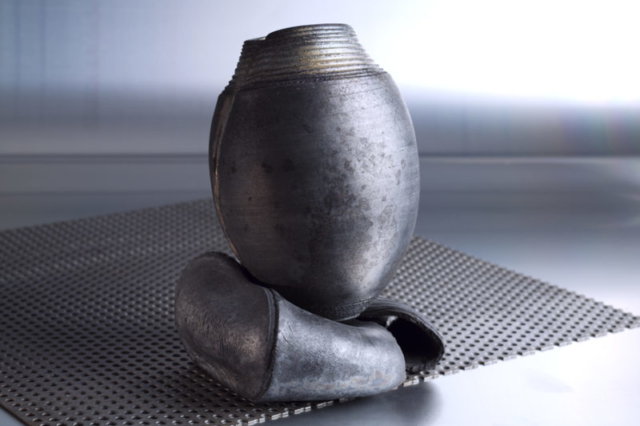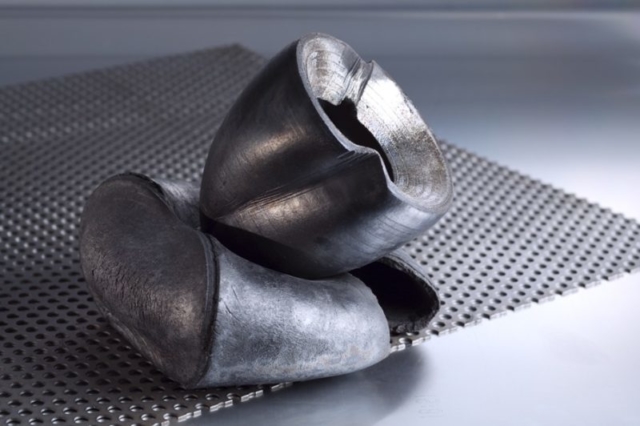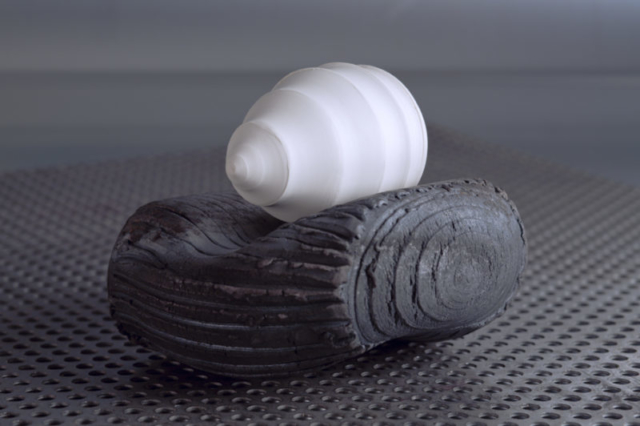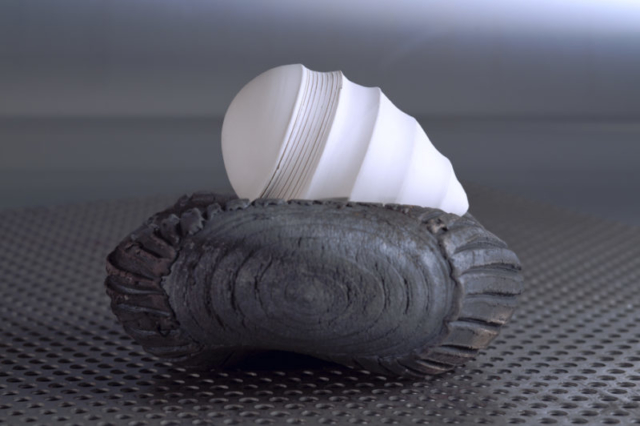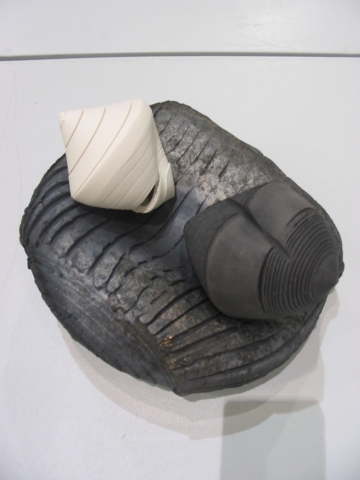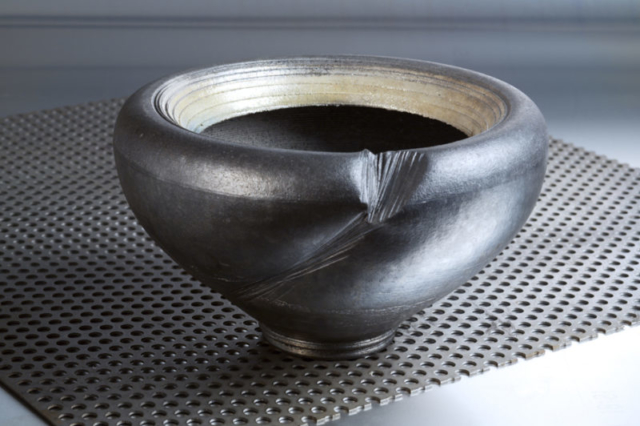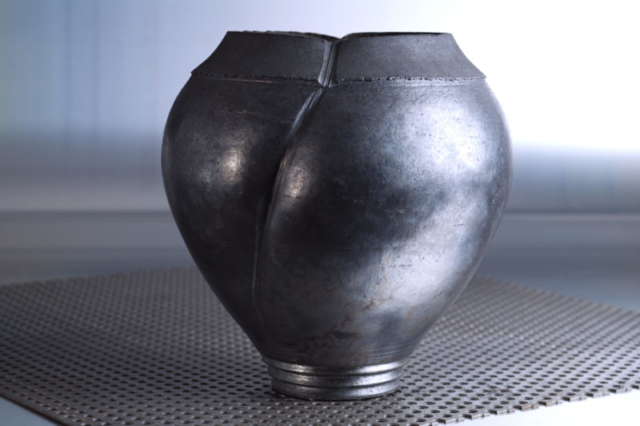The installed exhibition work Affairs of the Heart was created in a month long international ceramics symposium with the interrogative title: Wofür brennen wir? (What do we fire for?) in Halle, in the eastern part of Germany . The site, 30 kilometres north of Leipzig where my mother was born, stimulated my first significant work that was the direct product of reflection on my grandparents, who were killed in the Nazi death-camps.
The objects that comprised the installations reprised some of the outcomes realised in the installation Durch das Feuer Gehen which had itself stimulated this introspection into my own heritage that touched on Germany; there I had installed some of the vessels lying on their sides, to convey the chaos of archaeological finds as well as the sense of disturbance in a regulated environment of the museum, to symbolically suggest the disruption of ordered existences. This meant that the opening existed on the side of the vessel and negated the need for a foot; so the individual vessel elements were developed, turned to a point – the classical shape of the amphora. I understood this archaic image of transportation and containment to carry the metaphors of damage and destruction that are suggested by my conflicted association with Germany. The mark-making began to be more violently expressed and dominant – a crease incised down the length of the piece. These were complemented by small porcelain thrown forms which were pressed, fossil-like, into soft, receptive clay and raku fired black; to create a cradle for the forms. The discussions at the symposium of Wofur brennen Wir, in which I interrogated my own rationales for firing, helped to clarify the possibility of there being a personal meaning to firing, bringing to fruition a glimpsed perception that had been gestating during the writing of my second book, that was nearing completion (Firing, 2007).
A further meaning and significance was later attributed to the work: as the vessels without a foot, having been turned to a point, and scarred with a deep impression on the side, were also reminiscent of the shape of the heart; with no premonition I was to require a quadruple heart bypass operation only months later, yet my coronary arteries must have been in a critical condition during this symposium. This re-consideration of the meanings of the work led to the next installations, which I understood as representative of the body – of mine as well as of others’. Thus this experience was critical in forcing me to read my work not merely as crafted artefacts , but also as objects of embodied narrative. I had experienced the reality of what Joseph Beuys had said: “Illnesses are almost always spiritual crises in life, in which old experiences and phases of thought are cut off in order to permit positive changes.” (Quoted in: Lucie-Smith, 1987, p125) After the operation, as I was recovering from open-heart surgery with an eight inch scar on my chest, I re-interpreted the meaning of the vessels that had been presented on their sides: the intended disruption of the convention of a foot on the pot became heart-shaped objects with a symbolic gash. Achim Borchardt-Hume, in critiquing the actions of Doris Salcedo in her intervention Shibboleth reflects on this activity of cutting and incision in a symbolic way: “The act of cutting is motivated in equal measure by anger and the will to harm as by a mode of doubt and enquiry, of testing the limits. By creating a moment of disjuncture, cuts offer a means to find out what happens beneath the surface” (Salcedo, 2007,p17). In the indentation and cutting of the vessels I likewise am seeking for a meaning below the surface.
